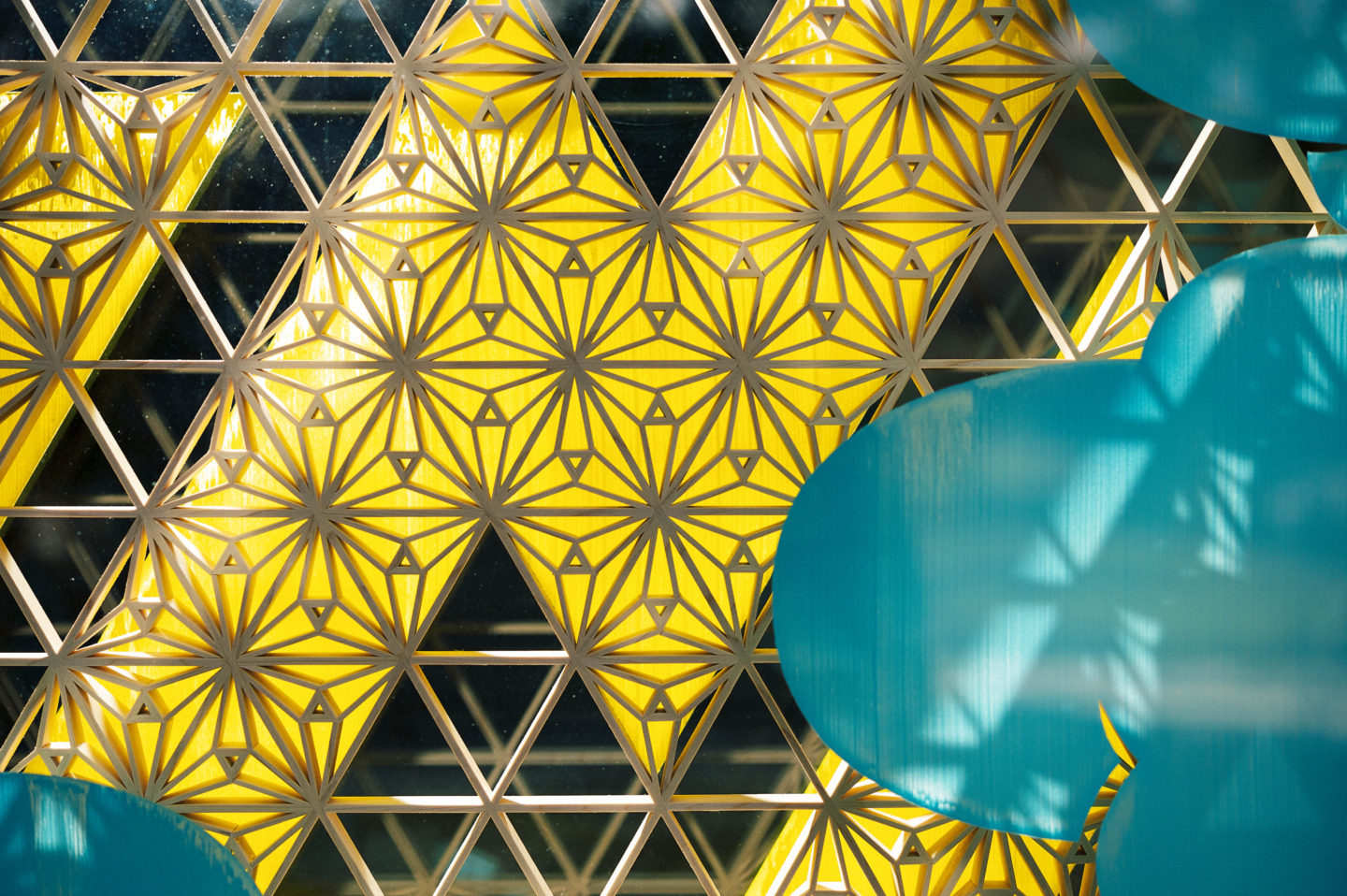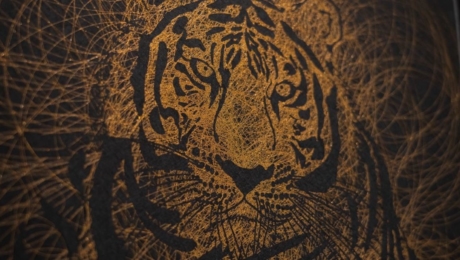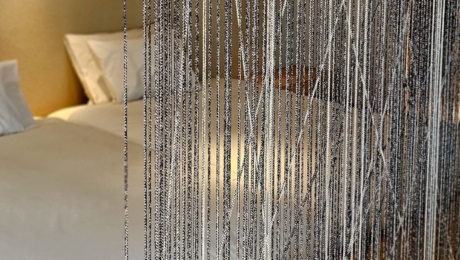

Collaboration with Artist Opens Up the Future of Kumiko Woodworking
2023.06.06
LIFEDelicate kumiko woodwork, placed outdoors amidst the greenery of the surrounding trees. The glass, which has kumiko woodwork built into it, has had colorful art painted onto it. The combination is beautiful, with the soft sunlight filtering through the trees evoking a new tone and expression from the pieces with every passing breeze. This is the Edo Kumiko Tatematsu display at the “Edo Tokyo Rethink” exhibition held this past March at the Koishikawa Korakuen Gardens in Tokyo. The exhibition, directed by contemporary artist Noritaka Tatehana, was held as part of the Edo Tokyo Kirari Project, and featured works by six businesses, including Edo Kumiko Tatematsu. Tatehana’s efforts to present the value and beauty of traditional industry in new forms garnered considerable acclaim.

Takahiro Tanaka, the second-generation head of Edo Kumiko Tatematsu, says that he decided to participate in the exhibition because, “I thought Tatehana would bring ideas to the table that I wouldn’t have thought of on my own.” Used in this particular collaboration were two delicate traditional kumiko patterns called “Kawari Asa-no-Ha” and “Kikyo-Kikko.” Each of the kumiko woodwork pieces were sandwiched between two pieces of glass, on both sides of which Tatehana painted thunderclouds with acrylic paint. The result were pieces with an evocative depth. Another reason why the asa-no-ha (hemp leaves), kikyo (balloon flower), and thundercloud patterns were used in these pieces was that they are said to ward off evil.

“I was stunned by how the piece came out. It was more innovative than I could have imagined. I think the bold, colorful thundercloud pattern brings out the beauty of the delicate geometric kumiko pattern, and vice versa. It’s very beautiful,” says Tanaka. Tanaka also says that the fact that it was an outdoor exhibition – something rarely seen in kumiko woodworking – was another refreshing element of the display. The pieces were in peaceful harmony with the surrounding trees, and the shadows made by the light made the three-dimensional effect even more striking. The display received high praise from visitors, who said that the pieces gave them a glimpse into all of the new possibilities for kumiko woodworking.

Traditional craftwork is often thought of as something “complete” and unchanging. It is important to remember, however, that they have only survived to the present day because they have changed with the times. Tanaka says this exhibition has given him a renewed sense of the importance of evolving the craft.
“I think the theme of this particular exhibition, ‘Rethink,’ and the Edo Tokyo Kirari concept of ‘old meets new,’ are the same in terms of direction. It’s about how to add modern meaning to tradition. This experience has made me confident that kumiko woodworking can evolve in so many more ways.”
Photo by GION






